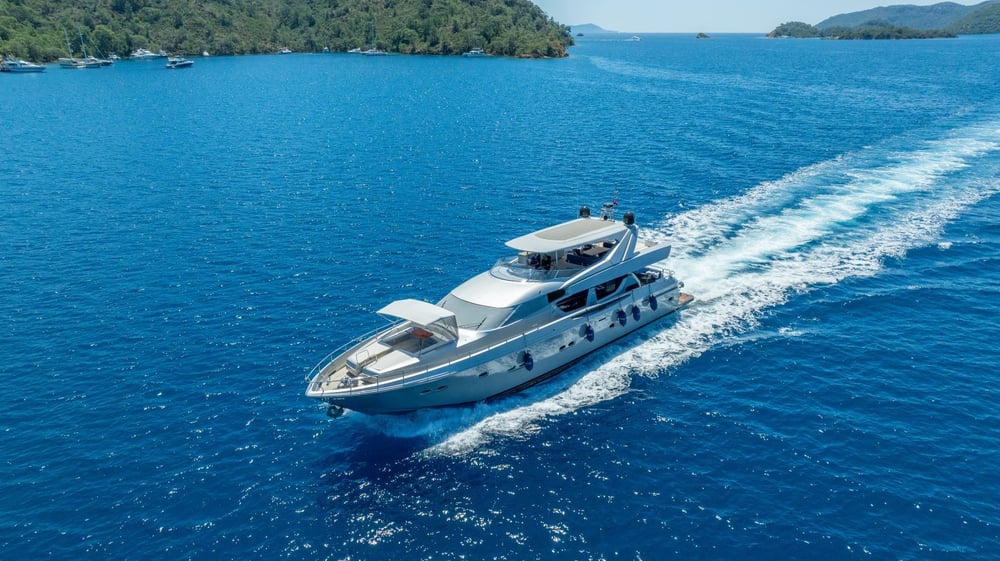History Supreme: Inside the Most Expensive Yacht Ever Conceived
In the world of ultra-private luxury maritime design, bespoke detailing and rare materials often set the standards. But one vessel has gone beyond the norm, transcending even the most extravagant expectations: History Supreme. This 100-foot yacht, allegedly priced at an astronomical $4.8 billion, is frequently cited as the priciest yacht ever made. Yet its story straddles the boundary between verifiable marvel and whispered legend.
Behind the world’s most expensive yacht are the artisanal hands of British luxury designer Stuart Hughes, renowned for his gold-plated iPhones and diamond-encrusted laptops. History Supreme is said to be sheathed in over 100,000 kilograms of solid gold and platinum. The precious metals reportedly envelop everything from the hull to the dining area, the anchor, and even the rails. Such extravagance places the vessel not merely in the world of luxury yachting, but somewhere closer to contemporary myth.

What gives History Supreme its peculiar resonance is not only the materials but its design sensibility: The extraordinary that is surrounded with secrecy. The master suite, for instance, is rumoured to contain a wall feature composed of genuine meteoric stone and a sliver of Tyrannosaurus rex bone, a surreal blend of natural history and rarefied design. An aquarium is also mentioned, made of 68 kilograms of 24-carat gold, a liquor bottle adorned with an 18.5-carat diamond, and a panoramic wall fashioned for the discerning collector, all of which add to its storied profile.
At the core of the yacht's legend is its buyer, who is claimed to be an unnamed Malaysian businessman. Some speculate that this anonymous figure is Robert Kuok, Malaysia's wealthiest individual, though no formal confirmation has ever been made. Kuok is publicly known as a discreet, conservative, and deeply private figure, aligning with the veiled ownership surrounding History Supreme. If true, it would lend the tale a degree of coherence: a man of almost mythic wealth purchasing a yacht that mirrors that very disposition.
But herein lies the paradox. For all its detail, the yacht has never been photographed in open waters, never berthed at a major marina, nor has it been confirmed by any recognised ship registry. Even seasoned yachting experts question the yacht's engineering viability. Encasing a vessel in so much precious metal, they argue, would introduce significant challenges in weight distribution, structural integrity, and resilience, not to mention the maintenance costs, estimated at $50 million annually. It would necessitate a highly specialised 50-member crew, insurance arrangements tailored to the yacht’s unprecedented value, and unique protocols for security and preservation.
History Supreme, with all these logistical improbabilities, continues to serve a purpose in cultural imagination. It is the maritime equivalent of a Fabergé egg, which remains a symbol not just of wealth, but of how extravagance can be shaped by story, imagination, and excess.
In that sense, it could be said to align with the world of rare collectibles and high-value art, where objects are valued not only for their function but for their cultural and symbolic weight. History Supreme represents a distilled expression of extreme wealth just like an archival couture piece that marks a specific moment in design history.
Interestingly, this is not without precedent. The modern superyachts, particularly those exceeding $500 million in build costs, often carry similar hallmarks: one-of-a-kind interiors, fine art installations, private IMAX theatres, even cryogenic wine cellars. This kind of extreme indulgence is also reflective of broader economic conditions. The past two decades have seen unprecedented surges in ultra-high-net-worth individuals globally. In such an economic climate, objects like History Supreme become plausible, if not entirely probable.
Of course, the ambiguity surrounding the yacht’s existence invites skepticism. And yet, in some quarters, that very ambiguity has become part of its brand mythology. Stuart Hughes continues to maintain the yacht’s authenticity, though technical blueprints and verified public sightings remain unavailable.
History Supreme, whether tangible or not, has shaped discourse around the outer limits of material luxury. Its narrative, gold-plated decks, dinosaur bones, and meteoric stone, reads like speculative fiction, but exists within the public record as a data point of extreme affluence.
In this way, it acts as a case study in modern mythmaking. Much like Orson Welles' Citizen Kane redefined the boundaries of cinematic storytelling by blurring reality with fiction, so too does History Supreme challenge our notions of what is real, what is possible, and what luxury truly signifies.
Be it docked in some secretive marina or conjured by the collective desire for the unattainable, the History Supreme endures – at least in probable notion – as a symbol of ambition and the kind of rarity that continues to fascinate.



